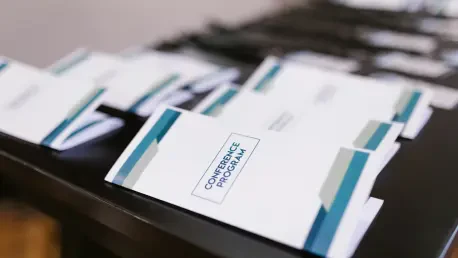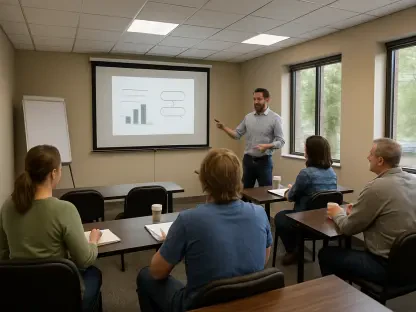Higher education stands at a critical juncture, grappling with declining enrollment numbers, shifting federal policies, and growing skepticism about the value of a college degree, while institutions must adapt swiftly to maintain relevance and balance innovation with ethical responsibility. Imagine a landscape where academia faces these challenges head-on, and this roundup dives into the most anticipated higher education conferences for 2026, gathering insights and opinions from industry leaders, administrators, and educators to highlight events that promise to shape the future of academia. The purpose is to provide a comprehensive guide, comparing perspectives on key gatherings that address urgent challenges and emerging trends, helping professionals decide where to invest their time and resources.
Exploring the Importance of Conferences in a Changing Academic Landscape
Conferences in higher education serve as vital platforms for networking, professional development, and strategic dialogue. Industry perspectives consistently emphasize their role in fostering collaboration amid rapid change. Many administrators note that these events offer a rare chance to step back from daily operations and engage with broader sector-wide issues, such as funding constraints and policy shifts. Their value lies in connecting diverse stakeholders who share a common goal of advancing institutional missions.
Beyond networking, these gatherings are seen as incubators for innovative ideas. Faculty members and technology specialists often highlight how conferences spark inspiration through workshops and panels, providing actionable strategies to implement back on campus. The consensus points to an unparalleled opportunity for the cross-pollination of ideas, where attendees can learn from both the successes and challenges faced by peers across different regions and institution types.
However, opinions vary on accessibility and impact. Some educators argue that the cost and time commitment can be prohibitive, especially for smaller institutions with limited budgets. Others counter that virtual options and targeted agendas in 2026 are making these events more inclusive, ensuring broader participation. This debate underscores the need to choose conferences that align with specific professional goals and institutional priorities.
Must-Attend Higher Education Events for 2026: A Comparative Roundup
Addressing Trust, Policy, and Accountability Challenges
Conferences focusing on trust and accountability remain a top priority for many in academia. Events like the AAC&U Annual Meeting and the CHEA/CIQG Annual Conference are frequently cited by policy experts for their deep dive into rebuilding public confidence. Discussions at these gatherings often center on navigating regulatory changes, with a strong emphasis on transparency in student outcomes and data handling, reflecting a sector-wide push to restore faith in higher education.
Insights from financial officers and enrollment managers reveal a shared concern about declining student numbers and funding cuts, often highlighted in these conference agendas. The urgency of these issues drives robust debates on balancing institutional autonomy with increasing oversight. While some administrators advocate for self-regulation as a path to integrity, others stress that external accountability measures are essential to maintain credibility, showcasing a split in strategic approaches.
A recurring theme from past attendees is the actionable nature of sessions at these events. They often provide frameworks for aligning policies with ethical standards, which many see as critical in an era of heightened scrutiny. The differing views on how much oversight is necessary fuel dynamic conversations, positioning these conferences as essential spaces for shaping governance models that can adapt to external pressures.
Driving Digital Transformation and Innovation Forward
Technology’s transformative potential in higher education garners significant attention at events like OLC Innovate and the Educause Annual Conference. Tech specialists and instructional designers praise these conferences for showcasing practical applications, such as AI integration in learning platforms and blended learning models. Their focus on real-world implementation is often cited as a key reason to attend, offering tools to enhance both teaching and administrative efficiency.
Differing opinions emerge on the pace of tech adoption. Some IT leaders argue for rapid integration to stay competitive, pointing to case studies presented at these events that demonstrate improved student engagement through digital tools. Conversely, others caution against unchecked enthusiasm, raising concerns about data privacy and the digital divide, issues frequently tackled in panel discussions to ensure balanced perspectives on innovation’s risks and rewards.
A common thread among reviews is the value of networking with ed tech entrepreneurs at these conferences. Many attendees note that partnerships formed during such events often lead to pilot programs that test cutting-edge solutions. This collaborative spirit is seen as a major draw, though some express a desire for more focus on mitigating technology’s pitfalls, suggesting a need for deeper dialogue on ethical implications in future agendas.
Advancing Diversity, Equity, and Inclusion Despite Pushback
The commitment to diversity, equity, and inclusion (DEI) remains a focal point at gatherings like the NADOHE Annual Conference. Diversity officers and faculty leaders often commend this event for confronting resistance to DEI initiatives head-on, offering strategies to embed inclusivity into institutional frameworks. The emphasis on democratic values resonates strongly with those advocating for systemic change in academia.
Regional disparities in DEI challenges spark varied opinions among professionals. Some from areas with strong opposition to such initiatives highlight the conference’s role in providing resilience-building tools and legal insights. Others from more supportive environments focus on its forward-looking approaches, like integrating DEI into curriculum design, illustrating how these events cater to a spectrum of contextual needs with tailored solutions.
A point of contention lies in prioritizing DEI amid competing institutional demands. While many argue it is central to academic success and student retention, a minority view it as a secondary concern in light of budget constraints. Feedback from past participants often underscores how these conferences challenge outdated assumptions, reframing inclusivity as a non-negotiable pillar of higher education’s mission, a perspective that continues to gain traction.
Fostering Leadership and Student-Centric Approaches
Leadership development and student well-being are core themes at events such as the CIC Presidents Institute and the AAC&U Conference on Learning. College presidents and senior administrators frequently cite these conferences for their innovative governance models, with concepts like “courageous care” gaining attention for prioritizing mental health and ethical decision-making among students and educators alike.
Comparative insights reveal diverse takes on effective leadership. Some leaders value the strategic focus of these events, which often include expert-driven forecasts on aligning institutional missions with evolving needs. Others emphasize the practical workshops that offer hands-on tools for bridging gaps between executives and boards, noting a preference for actionable takeaways over theoretical discussions in shaping resilient institutions.
A unique strength of these conferences, according to many attendees, is their dual focus on personal and institutional growth. Testimonials often mention how sessions inspire a renewed commitment to student success through tailored support systems. Despite differing views on specific leadership styles, there is broad agreement that these events play a crucial role in equipping leaders to navigate uncertainty with compassion and foresight.
Key Takeaways and Guidance for Choosing the Right Event
Reflecting on the insights gathered, several standout themes emerge for 2026, including trust-building, technological advancement, DEI advocacy, and leadership innovation. Feedback from various stakeholders highlights a shared belief in the power of conferences to address these critical areas through targeted content. The diversity of focus ensures that professionals across roles—whether administrators, faculty, or tech specialists—can find events suited to their specific challenges.
Guidance on selecting the right conference often centers on aligning personal and institutional goals. Many recommend assessing whether an event offers workshops or networking opportunities that directly address pressing needs, such as policy navigation or digital integration. Budget considerations also play a role, with virtual options frequently suggested as cost-effective alternatives for those unable to travel.
Another tip from seasoned attendees is to prioritize gatherings with a track record of fostering meaningful connections. Reviews often stress the importance of engaging with peers who share similar challenges, as these interactions can lead to long-term collaborations. Tailoring attendance based on role-specific content, like legal or HR-focused sessions, is also advised to maximize the impact of time spent at these events.
Reflecting on Collective Insights for Future Action
Looking back on the roundup, it becomes evident that higher education conferences in 2026 offer unparalleled opportunities for professionals to tackle pressing issues through collaboration and innovation. The varied opinions and insights from industry leaders, educators, and administrators paint a picture of a sector determined to adapt, whether through policy reform, tech integration, or inclusive practices. Each event discussed has carved out a unique space to address specific facets of academia’s evolving landscape.
For those planning ahead, a practical next step involves mapping out a conference calendar that balances broad sector trends with niche professional needs. Exploring virtual sessions could widen access, while targeting events with strong networking components might yield partnerships that drive change on campus. Additionally, delving into post-conference resources or follow-up webinars is often recommended by past participants as a way to sustain momentum. These actionable considerations provide a pathway to transform insights gained into tangible progress within institutions.








